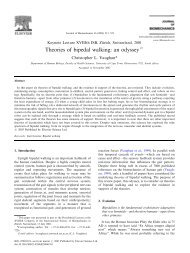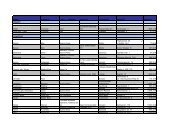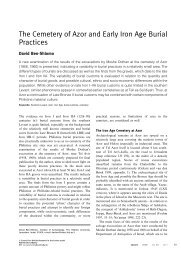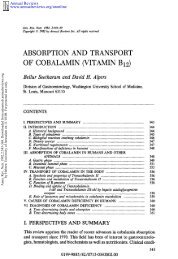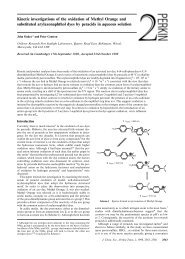The Riddle of Ramat Raḥel: The Archaeology of a Royal Persian ...
The Riddle of Ramat Raḥel: The Archaeology of a Royal Persian ...
The Riddle of Ramat Raḥel: The Archaeology of a Royal Persian ...
You also want an ePaper? Increase the reach of your titles
YUMPU automatically turns print PDFs into web optimized ePapers that Google loves.
5casemate wall and an additional capital, found close by, facilitated Aharoni’s understanding <strong>of</strong> thegrandeur and importance <strong>of</strong> the site. Sixty-nine jar handles with stamp impressions, dating to theIron Age as well as the <strong>Persian</strong> and Hellenistic periods, were found and recorded in this firstseason―evidence <strong>of</strong> <strong>Ramat</strong> <strong>Raḥel</strong>’s importance and administrative status. Aharoni emphasizedthe significance <strong>of</strong> the site during the Iron Age, to which he related the royal architecture, butalready in this salvage operation Aharoni noted finding pottery and stamp impressions from the<strong>Persian</strong> period.<strong>The</strong> findings <strong>of</strong> the 1954 salvage excavation led Aharoni to set up an archaeologicalexpedition under the joint auspices <strong>of</strong> the Hebrew University and the Sapienza–Università diRoma. Four large-scale excavation seasons were conducted between 1959 and 1962, and theresults <strong>of</strong> these excavations were published in two volumes (Aharoni 1962; 1964), defined aspreliminary reports. While summarizing each season Aharoni noted the many finds from the<strong>Persian</strong> period but expressed frustration at his inability to relate these finds to any notablearchitecture (Aharoni 1962: 4-10 and 27-34; 1964: 17-23 and 42-48). In his final conclusionsAharoni stated:"This latter citadel and its date are still extremely problematic. <strong>The</strong> main evidence forits existence is the unusually high number <strong>of</strong> seal-impressions from this period,including stamps <strong>of</strong> the governors <strong>of</strong> the province <strong>of</strong> Yehud. It is clear that the originalinner citadel was left in ruins and was apparently used as a dump for the refuse fromthe <strong>Persian</strong> citadel. This seems to have been built further to the south, but we were notable to come to any certain conclusions about it" (Aharoni 1964: 120).At the same time, Aharoni (ibid.) realized that the royal edifice and the palatial architecture,that he attributed to Stratum Va, must be dated to the end <strong>of</strong> the Iron Age. He finally concludedthat the Stratum Va palace was built in 612 BCE by King Jehoiakim. Aharoni also insisted that thepalace, being Judahite, was destroyed in 586 BCE by the Babylonians, leaving it in existence foronly three decades.It is clear that Aharoni's stratigraphical and chronological schema for the site wasproblematic: on the one hand, he dated the palatial compound to the last three decades <strong>of</strong> the IronAge. On the other hand, the presence <strong>of</strong> hundreds <strong>of</strong> yhwd stamped handles and many other findsfrom the <strong>Persian</strong> period remained with no apparent architectural context (Aharoni 1964: 120).Aharoni dated Stratum IVb to both the <strong>Persian</strong> and Late Hellenistic periods; it included segmented



